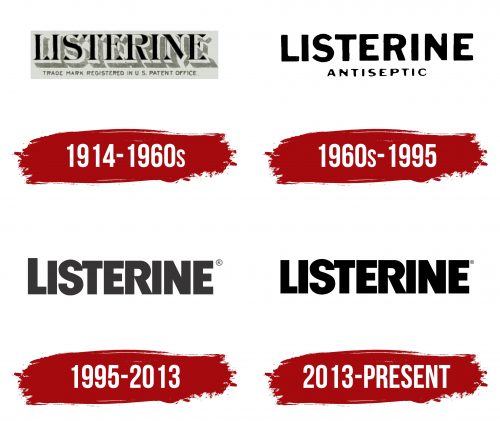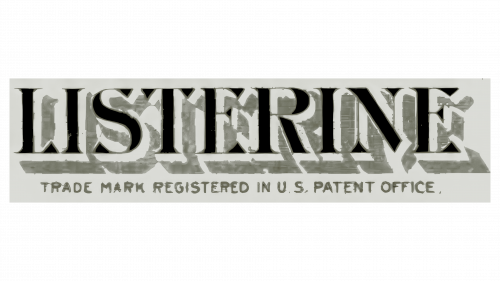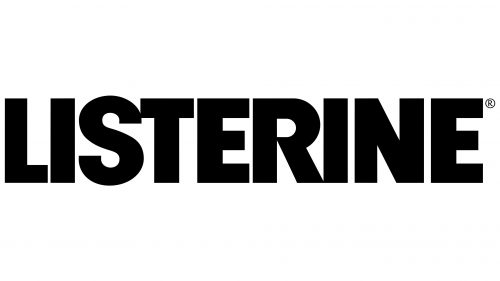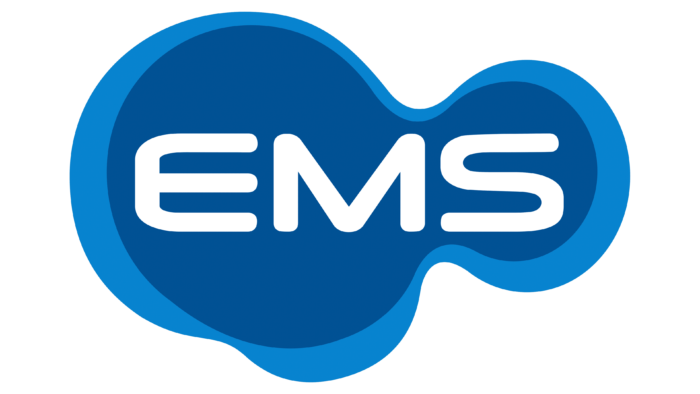The LISTERINE logo exudes confidence, strength, and reliability. The emblem conveys the importance of oral care. The mouthwash guarantees the protection of tooth enamel, and the logo reflects the effectiveness of antiseptics in the product’s time-tested formula.
Listerine: Brand overview
In 1879, in St. Louis, Missouri, Dr. Joseph Lawrence and pharmacist Jordan Wheat Lambert created Listerine. Developed initially as a powerful surgical antiseptic, its name honored British surgeon Joseph Lister, a pioneer in antiseptic surgery. Listerine was initially marketed as a medical antiseptic used for treating gonorrhea and cleaning floors.
By 1895, it was sold to dentists as an oral antiseptic. In 1914, the product became the first over-the-counter mouthwash sold in the United States. Lambert Pharmacal Company, later renamed Warner-Lambert, launched an aggressive advertising campaign in the 1920s, focusing on combatting bad breath, termed “halitosis.”
Advertisements in the 1920s and 1930s played on social fears, warning that bad breath could lead to social isolation and personal failures. In the 1950s, it was promoted as a cold preventive, leading to a prolonged legal battle with the Federal Trade Commission in the 1970s. In 1976, the FDA approved the mouthwash as an over-the-counter remedy for temporary relief of sore throats.
The introduction of Cool Mint Listerine in 1987, the first flavored variant, significantly expanded its consumer base. Warner-Lambert was acquired by Pfizer in 2000, and in 2006, Pfizer’s consumer products division, including the mouthwash, was sold to Johnson & Johnson. The 2000s saw a significant product line expansion, introducing various flavors, alcohol-free options, and teeth-whitening products.
The company began offering other oral care products, such as dental floss and breath strips. Innovations continued in the 2010s with products like Listerine Advanced White for teeth whitening and Listerine Zero with lower alcohol content. Today, the brand remains one of the most popular mouthwash brands globally, available in more than 85 countries. The brand invests in oral health research and collaborates regularly with dental associations worldwide.
Meaning and History
What is Listerine?
It is an antiseptic mouthwash designed to reduce plaque and oral bacteria. It is used to freshen breath and maintain oral hygiene. The product contains antiseptic ingredients such as eucalyptol, thymol, methyl salicylate, and menthol, which fight germs. Listerine is recognized for its effectiveness in maintaining oral cleanliness.
1914 – 1960s
The emblem was introduced when the product became available over the counter. The black letters are in a distinctive font, with large triangles at the ends emphasizing the product’s importance.
The shadow, which significantly increases the size of the word, draws special attention. This technique highlights:
Microbes are invisible to the naked eye, yet the oral microbiome greatly impacts dental and mucosal health. The logo designers aimed to draw attention to these tiny, unseen organisms.
Bad breath is intangible but more significant than words and can cause people to turn away.
The product addresses these issues. The greenish outline highlights the mouthwash’s herbal composition, which includes menthol, cineole, and methyl salicylate extracted from leaves.
The name honors Joseph Lister, the first to use antiseptics in surgery. The product was initially developed to clean operating rooms and instruments. It was later suggested for mouth rinsing, retaining the original name.
1960s – 1995
The emblem was changed after the manufacturing company transformed into Warner-Lambert. Bold and confident letters indicated the growing popularity of the product. Advertising significantly impacted understanding of the importance of the bad breath problem. Therefore, sales rapidly increased. The addition of “antiseptic” below the name revealed the mouthwash’s principle of action.
1995 – 2013
With the arrival of a new owner (Pfizer), the logo changed again. The large bold letters of the name marked the important place the mouthwash held among antiseptic oral care products, covering over 40% of the market. The first letter was slightly enlarged, emphasizing the product’s effectiveness.
2013 – today
Listerine, one of the leading brands in oral care, has established itself as a product delivering excellent results. The emblem reflects the company’s long history and commitment to quality. Since its inception, the brand has become synonymous with reliability, evident in its robust and powerful logo design.
The Listerine logo is a strong and trustworthy emblem in black. The simple and powerful typography conveys the brand’s core values focused on effectiveness. Each character is associated with one of the nine product formulas and flavors, indicating the range of products and the ability to meet diverse consumer needs.
The use of uppercase letters emphasizes the brand’s importance and strength. The logo symbolizes durability and reliability, showing that Listerine offers superior results in oral care. The product guarantees fresh breath, bacteria elimination, teeth whitening, and protection against cavities and gum disease.
The logo features a strict sans-serif font that looks modern and professional. The font conveys a sense of reliability. The simplicity and power of the logo align with modern design trends and make it easy to remember.
The black color symbolizes seriousness, power, and trust. It highlights the product’s seriousness and emphasizes its strength and reliability.








